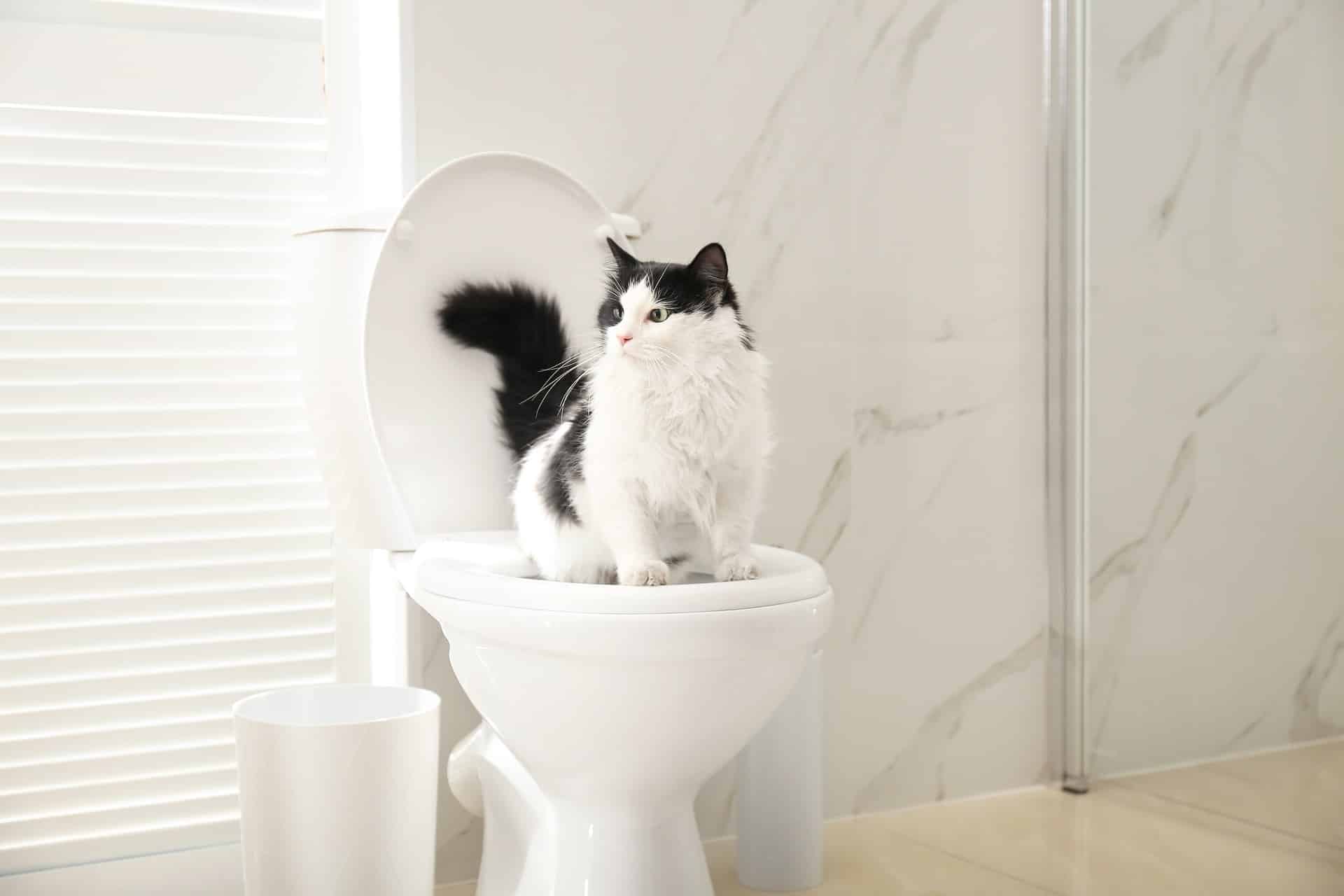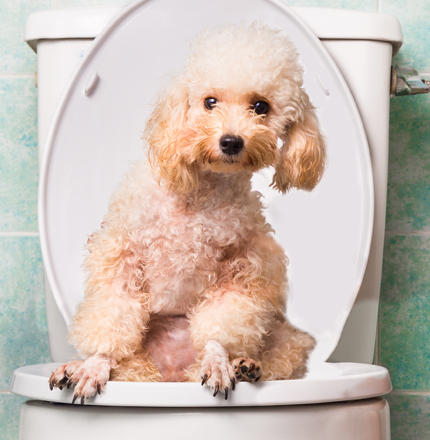This article listed below relating to Should you flush animal waste down the toilet is truly stimulating. You should look it over.

When it concerns dealing with waste, specifically animal waste, many individuals often resort to the hassle-free alternative of flushing it down the bathroom. However, this relatively very easy option can have serious consequences for the setting and public health. In this article, we'll discover why flushing pet waste down the bathroom is a poor concept and supply alternative techniques for correct disposal.
Introduction
Appropriate garbage disposal is essential for maintaining environmental sustainability and public health. While it may seem harmless to flush animal waste down the bathroom, it can bring about numerous problems, both for the atmosphere and human wellness.
Threats of flushing pet waste
Environmental impact
Purging animal waste introduces harmful bacteria and pathogens into rivers, which can adversely influence marine communities. These virus can contaminate water sources and injury marine life, disrupting delicate communities.
Public health issues
Pet waste has damaging microorganisms such as E. coli and Salmonella, which can pose serious wellness risks to human beings. Flushing animal waste down the commode can infect water supplies, causing the spread of illness and infections.
Alternatives to flushing
Instead of purging pet waste down the commode, there are numerous different disposal methods that are more environmentally friendly and hygienic.
Composting
Composting pet waste is a green means to get rid of it. By composting, raw material is broken down right into nutrient-rich soil, which can be made use of to fertilize yards and plants.
Garbage dump disposal
Throwing away pet waste in a land fill is another choice. While not as environmentally friendly as composting, it is a safer alternative to flushing, as it avoids the contamination of water resources.
Animal garbage disposal systems
There are specialized pet dog waste disposal systems offered that safely and hygienically take care of animal waste. These systems often use enzymes to break down waste and get rid of smells.
Actions to correct animal waste disposal
To guarantee appropriate disposal of pet waste, adhere to these actions:
Scooping and landing waste
Frequently scoop and bag animal waste using naturally degradable bags. This stops waste from polluting the atmosphere.
Utilizing assigned waste bins
Dispose of bagged animal waste in marked waste containers, such as garden compost bins or garbage dump bins. Avoid flushing it down the commode whatsoever costs.
Cleansing litter boxes and pet dog locations consistently
Consistently tidy can and family pet areas to stop the accumulation of waste and microorganisms. Usage pet-safe cleansing items to preserve health.
Advantages of proper disposal techniques
Embracing appropriate disposal approaches for pet waste offers numerous advantages:
Minimized environmental pollution
Appropriate disposal approaches minimize the danger of environmental pollution, safeguarding waterways and communities from contamination
Minimized threat of water contamination.
By avoiding flushing pet waste down the bathroom, the risk of water contamination is dramatically minimized, safeguarding public health.
Boosted cleanliness and hygiene
Proper disposal methods advertise much better cleanliness and health, developing a safer environment for both human beings and pets.
Verdict
Finally, flushing pet waste down the commode is unsafe to the setting and public health. By embracing alternate disposal methods and adhering to appropriate waste management techniques, we can lessen the adverse effect of pet waste and contribute to a cleaner, healthier earth.
Why website You Should Never Flush Cat Poop Down the Toilet
A rose by any other name might smell as sweet, but not all poop is created equal. Toilets, and our sewage systems, are designed for human excrement, not animal waste. It might seem like it couldn’t hurt to toss cat feces into the loo, but it’s not a good idea to flush cat poop in the toilet.
First and foremost, assuming your cat uses a litter box, any waste is going to have litter on it. And even the smallest amount of litter can wreak havoc on plumbing.
Over time, small amounts build up, filling up your septic system. Most litter sold today is clumping; it is made from a type of clay that hardens when it gets wet. Ever tried to scrape old clumps from the bottom of a litter box? You know just how cement-hard it can get!
Now imagine just a small clump of that stuck in your pipes. A simple de-clogger like Drano isn’t going to cut it. And that means it’s going to cost you big time to fix it.
For an amusing, graphic tale of what happens when you flush too much litter down the toilet all at once, take a few minutes to read Gene Weingarten’s 2017 Washington Post column “So that’s what happens when you flush cat litter down the toilet.”
Parasitic Contamination
Believe it or not, your healthy kitty may be harboring a nasty parasite. Only cats excrete Toxoplasma in their feces. Yet it rarely causes serious health issues in the cats that are infected. Most people will be fine too if infected. Only pregnant women and people with compromised immune systems are at risk. (If you’ve ever heard how women who are expecting are excused from litter cleaning duty, Toxoplasma is why.)
But other animals may have a problem if infected with the parasite. And human water treatment systems aren’t designed to handle it. As a result, the systems don’t remove the parasite before discharging wastewater into local waterways. Fish, shellfish, and other marine life — otters in particular — are susceptible to toxoplasma. If exposed, most will end up with brain damage and many will die.
Depending on the species of fish, they may end up on someone’s fish hook and, ultimately on someone’s dinner plate. If that someone has a chronic illness, they’re at risk.
Skip the Toilet Training
We know there are folks out there who like to toilet train their cats. And we give them props, it takes a lot of work. But thanks to the toxoplasma, it’s not a good idea.
Leave the toilet to the humans, and accept your future litter cleaning duty.

Consistently tidy can and family pet areas to stop the accumulation of waste and microorganisms. Usage pet-safe cleansing items to preserve health.
Advantages of proper disposal techniques
Embracing appropriate disposal approaches for pet waste offers numerous advantages:
Minimized environmental pollution
Appropriate disposal approaches minimize the danger of environmental pollution, safeguarding waterways and communities from contamination
Minimized threat of water contamination.
By avoiding flushing pet waste down the bathroom, the risk of water contamination is dramatically minimized, safeguarding public health.
Boosted cleanliness and hygiene
Proper disposal methods advertise much better cleanliness and health, developing a safer environment for both human beings and pets.
Verdict
Finally, flushing pet waste down the commode is unsafe to the setting and public health. By embracing alternate disposal methods and adhering to appropriate waste management techniques, we can lessen the adverse effect of pet waste and contribute to a cleaner, healthier earth.
Why website You Should Never Flush Cat Poop Down the Toilet
A rose by any other name might smell as sweet, but not all poop is created equal. Toilets, and our sewage systems, are designed for human excrement, not animal waste. It might seem like it couldn’t hurt to toss cat feces into the loo, but it’s not a good idea to flush cat poop in the toilet.
First and foremost, assuming your cat uses a litter box, any waste is going to have litter on it. And even the smallest amount of litter can wreak havoc on plumbing.
Over time, small amounts build up, filling up your septic system. Most litter sold today is clumping; it is made from a type of clay that hardens when it gets wet. Ever tried to scrape old clumps from the bottom of a litter box? You know just how cement-hard it can get!
Now imagine just a small clump of that stuck in your pipes. A simple de-clogger like Drano isn’t going to cut it. And that means it’s going to cost you big time to fix it.
For an amusing, graphic tale of what happens when you flush too much litter down the toilet all at once, take a few minutes to read Gene Weingarten’s 2017 Washington Post column “So that’s what happens when you flush cat litter down the toilet.”
Parasitic Contamination
Believe it or not, your healthy kitty may be harboring a nasty parasite. Only cats excrete Toxoplasma in their feces. Yet it rarely causes serious health issues in the cats that are infected. Most people will be fine too if infected. Only pregnant women and people with compromised immune systems are at risk. (If you’ve ever heard how women who are expecting are excused from litter cleaning duty, Toxoplasma is why.)
But other animals may have a problem if infected with the parasite. And human water treatment systems aren’t designed to handle it. As a result, the systems don’t remove the parasite before discharging wastewater into local waterways. Fish, shellfish, and other marine life — otters in particular — are susceptible to toxoplasma. If exposed, most will end up with brain damage and many will die.
Depending on the species of fish, they may end up on someone’s fish hook and, ultimately on someone’s dinner plate. If that someone has a chronic illness, they’re at risk.
Skip the Toilet Training
We know there are folks out there who like to toilet train their cats. And we give them props, it takes a lot of work. But thanks to the toxoplasma, it’s not a good idea.
Leave the toilet to the humans, and accept your future litter cleaning duty.

We had been introduced to that editorial about 4 Reasons Why Dog Poop Cleanup is Important through a good friend on another website. Enjoyed reading our post? Please quickly share it. Let somebody else find it. I recognize the value of your readership.
Call